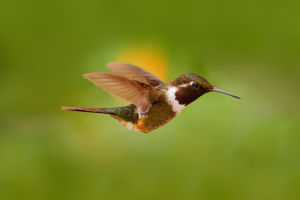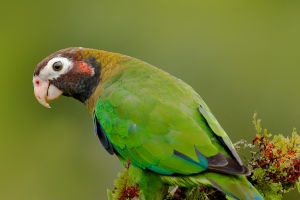Deer are wild animals widely distributed across various regions of the world.
They inhabit diverse environments, including forests, grasslands, and wetlands, and are admired for their graceful appearance and agile movements.
This article provides an in-depth overview of deer by exploring their classification, living habits, ecological value, and relationship with humans.
1. Classification
The Cervidae family consists of numerous species, with over 50 species worldwide. These species vary greatly in size, appearance, and habitat preferences.
Deer can be classified into the following main types:
1. Moose: Moose are the largest members of the deer family, found in North America and northern Europe. They are known for their tall shoulders and broad, fan-shaped antlers. Moose prefer to live in cold coniferous forests or wetlands, and their diet consists mainly of tender branches from willow and birch trees.
2. Red Deer: Red deer are medium-sized and inhabit the grasslands and forests of the Eurasian continent. They have long, branched antlers, and males engage in vocal displays and antler battles during the breeding season to compete for mates.
3. White-tailed Deer: Native to North America, especially the United States and Canada, white-tailed deer are easily recognized by their white tails, which they raise when running. They are one of the most familiar species of deer.
2. Living Habits
Deer are herbivorous animals, feeding primarily on various grasses, tender shoots, leaves, bark, and fruits. They are skilled at selecting the most nutritious parts of plants, favoring water-rich young leaves and fresh fruits. In cold winter, some deer species eat tree bark and dry branches for sustenance.
The social behavior of deer varies by species. Many deer species are social and tend to form groups, especially in winter, where herding helps them fend off cold and predators. However, some species, like white-tailed deer, are generally solitary or form small family groups, only coming together in larger groups during the breeding season.
3. Reproduction
The breeding season for deer typically occurs in the autumn, during which male deer often engage in fierce antler battles to compete for mating rights.
Antlers play a key role in courtship and competition, which is why male deer shed and regrow their antlers each spring. The size and shape of the antlers are often indicators of a deer’s age and health, with older and healthier males typically possessing larger antlers.
Deer pregnancies last six to eight months, with most births occurring in the spring or early summer. Most species of deer give birth to a single fawn, although twins are possible in some species. Newborn fawns are small and covered in natural spots that serve as camouflage, helping them avoid predators. During the first few weeks, the mother hides the fawn in tall grass to protect it from predators.
4. Ecological Value
Deer play a vital role in ecosystems. As herbivores, they regulate plant growth through grazing, preventing overgrowth or the spread of certain plant species. Additionally, deer are an essential food source for many predators, such as wolves and big cats, helping to maintain the balance within food chains.
However, when deer populations become too large, they can negatively impact vegetation and agriculture. Overgrazing by deer can lead to a reduction in certain plant species, even causing localized ecological imbalances. As a result, many regions manage deer populations through hunting or the introduction of natural predators to maintain ecological balance.
5. Relationship with Humans
As human activity expands, deer habitats have gradually shrunk, leading to increased conflicts between humans and deer. For example, deer may enter farmland and damage crops or cause traffic accidents. Moreover, deforestation and urban sprawl have left many wild deer with less and less space to live.
To balance deer protection with management, many countries have implemented specialized wildlife conservation policies. In some areas, deer are considered important tourism resources, attracting large numbers of visitors who come to observe and photograph them. Through scientific management and research, the numbers of wild deer populations are kept in check, ensuring sustainable development.
In conclusion, deer, as iconic wild animals, play an indispensable role in ecosystems and share a deep cultural and historical connection with human society. By gaining a deeper understanding of and protecting deer, we can better balance the relationship between humans and nature, ensuring that these beautiful creatures continue to thrive freely in the wild.


